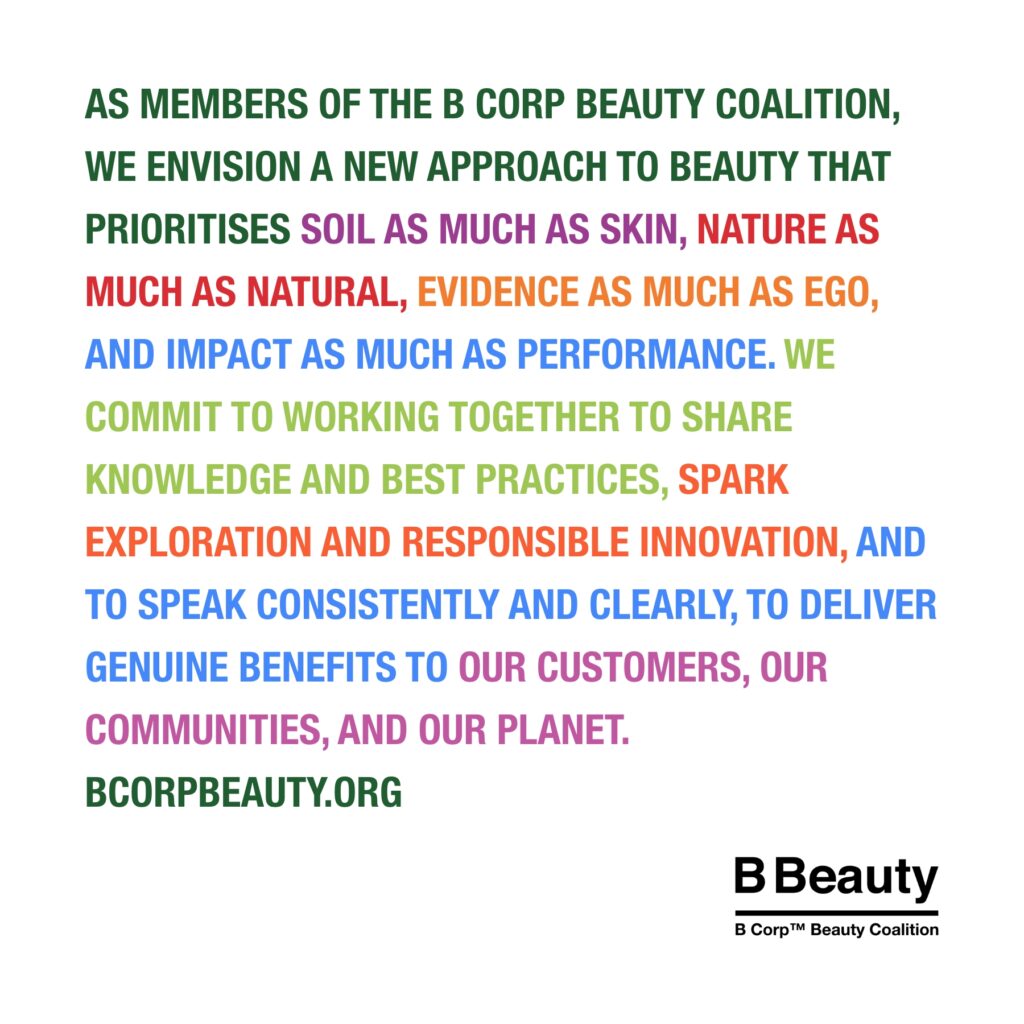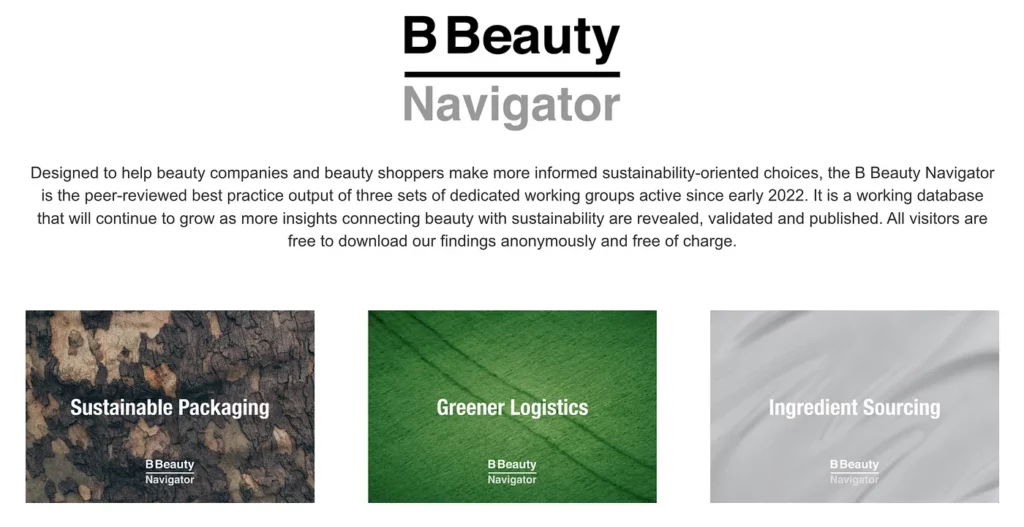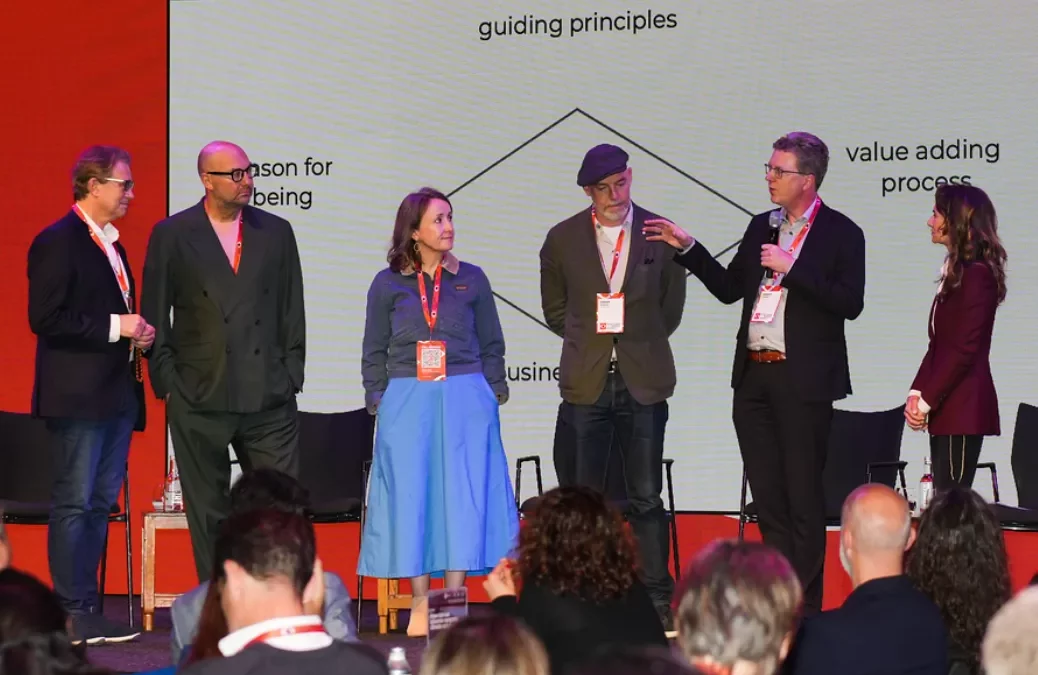Debating collective action at the B For Good Leaders summit in Amsterdam 2023 with representatives from Patagonia, Davines, Philips, and the Obama White House.
Lessons from the B Corp Beauty Coalition
Participating in the recent B For Good Leaders Amsterdam summit, together with B Lab Europe’s 10-year anniversary, helped give me some perspective on the challenges and lessons of leading an industry collective action initiative.
As Chair of the Supervisory Board of the B Corp Beauty Coalition, I had been invited to join three panels on collective action in front of an audience of up to 1,000 progressive leaders, and soon realized we were being held up as an example of current system best practice.
That was both a relief and a concern.
A relief in terms of the recognition for what we have achieved in a relatively short space of time and the support we are subsequently generating, despite the constant feeling of pushing water uphill, while operating in the dark, with strangers, and without a map.
A concern in terms of the immense distance we still have to travel to improve the sustainability standards of our industry (and deliver “beauty for good”) while grappling with the immense challenge of flipping the conventional business model on its head to do so; by bringing competitors and rivals to the same table and working together to transform our industry.

The B Beauty Manifesto.
So, after two years at the vanguard of the B Corp Beauty Coalition, from foundation to first official public anniversary (and a little Amsterdam perspective thrown in for good measure), there are six things I’ve learned that I believe are worth sharing for anyone else enlightened (or wacky) enough to want to engage in collective action for the greater good.
Not least because, as one fellow Amsterdam panelist observed, it takes around 15 years for any coalition to truly perform, and we simply don’t have that time.
- Define what you want to achieve together — that can improve your industry by reducing its impact — and what you can’t achieve alone.
- Draft a manifesto, and design an organizational structure and governance to enable it. Make it simple to understand and clear in its expectations of all members.
- Identify the criteria for the companies you wish to join— in our case B Corps — and start approaching them to become members because critical mass is essential. A website, logo, and shared online home help a lot.
- Make sure to engage their CEOs, secure access to their experts, and create the space to enable a culture of inclusiveness, team spirit, networking, and fun around the most talented and enthusiastic lead volunteers from each company.
- Apply a membership fee model that covers central coordination tasks to keep things on track and is fair to all members, whatever their size.
- Keep communicating — your progress, your plans, your participants —to your members and the world alike. The more people who believe something good is happening, the more likely it is to happen.
We’ve done most of the above, though not necessarily in the above order or even because we were smart enough to plan it that way. The ones we missed are the gaps we’re currently trying to close. Rest assured, none of them are ever completed.

The first published output of the B Corp Beauty Coalition, just one year after our foundation.
Freely available at bcorpbeauty.org.
What drives us first and foremost is the scale and necessity of the task. But there’s also something more: the unexpected and magnetic bonus of the new shared culture that is emerging from working together, of people genuinely and enthusiastically collaborating in new constellations for the greater good.
The path of collective action is neither easy nor well-trodden, but we’re leaving a trail. As the old African proverb goes: If you want to go fast, go alone. But if you want to go far, go together.
Shaun Russell, founder of SKANDINAVISK and our Chair of the Supervisory Board

